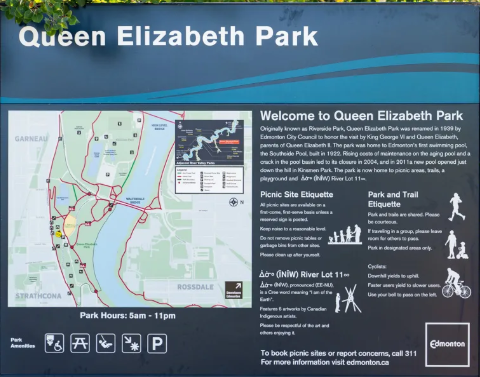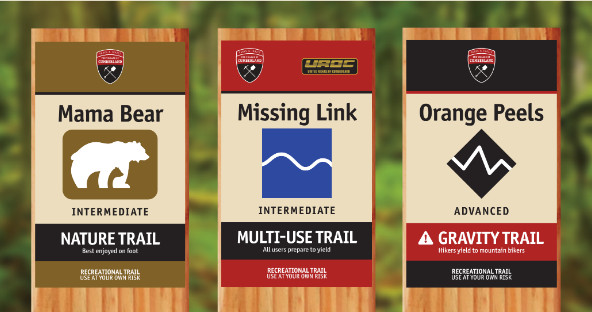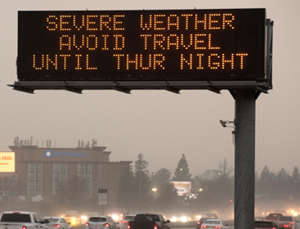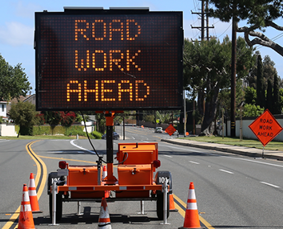Signs are an effective way to communicate and make the public aware of hazards within municipal parks, facilities, and roadways. By increasing awareness and safety, municipalities fulfil their legal responsibilities and reduce liability exposures.
Developing a Sign
When developing a sign, the following should be considered:
- Why do we need a sign?
- What is the main message we want to convey?
- Will a pictorial sign work?
- Is it easily understood by all?
- Can we use fewer words?
- Has spelling been checked?
- Does it comply with all legislation?
- What size is best?
- What is the most appropriate material?
- Where should the sign be located?
Sign Materials
| Material | Strengths | Weaknesses |
| Wood | – Blends with natural environment – Easy to construct – Can be individually shaped and cared for – Can be painted -Ages well | – Easy to vandalize – Difficult to carve detailed graphics |
| Fiberglass | – Wide range of colours available – Good for detailed graphics – Can simulate natural features such as rocks walls and stone – Cheap to make duplicates – Resistant to weathering and vandalism | – Colours fade over time |
| Metal | – Resistant to fading and discoloration – Good for detailed graphics – Can reproduce black & white photos – Range of ‘earthy’ colours available – Resistant to weathering and vandalism | – Expensive to duplicate – Reflects bright sunlight |
| Porcelain Enamel | – Good for detailed graphics – Photographs can be reproduced – Wide range of colours available – Resistant to weathering and vandalism | – Expensive – Susceptible to chipping and subsequent rusting |
| Stone | – Good for black and white images – Good for detailed line art – Resistant to weathering and vandalism – Easy to maintain | – Natural contours may make words difficult to read |
Parks and Trails
Parks and trails provide valuable recreational opportunities and promote healthy lifestyles. While generally perceived as low risk, there has been an increase in related claims. To mitigate risks, proper signage is critical in informing the public of potential hazards.
Recommended signage guidelines:
- Ensure all signage is clear, concise, and visible.
- Indicate appropriate age recommendations.
- Include safety warnings for various weather conditions.
- List the park and trail rules, including prohibited items and activities.
- Display trail maps with “You Are Here” markers.
- Use diagrams to show trail types and difficulty levels.
- Provide contact details for park rangers, emergency services, and local authorities.
Use of photos and diagrams is strongly encouraged as they can be more effective than written signs, especially for those who speak another language.
Examples of effective signage:
For further guidance, please refer to the “Bike and Walking Trails” safety bulletin.
Facilities
When facilities are open to the public, clear expectations should be communicated. Since the public may be unaware of the rules, signage is an effective way to convey them. Rules should be reviewed, prioritized by importance, and displayed in logical order. Sign placement is critical—ensure signs are located in high-traffic areas such as entrances, reception desks, restrooms, and locker rooms for maximum visibility.
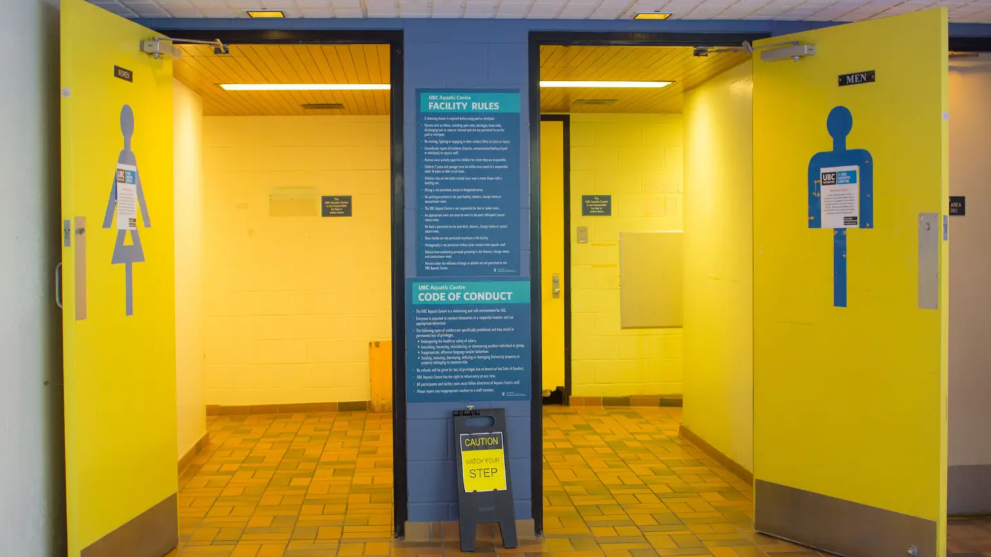
Roadways
Roadway conditions change frequently due to weather, construction, or accidents, making timely signage essential. Signs should alert drivers of upcoming hazards like closed lanes, sudden elevation changes, or unexpected weather conditions. Damaged or missing signs must be promptly replaced. Regular inspections ensure signs remain visible and in good condition. The use of digital signs is encouraged as they provide real-time information on road conditions. Additionally, all signage must comply with provincial standards.
Playgrounds
Proper signage ensures visitors are informed of rules, safety hazards, and other important details, enhancing their experience and encouraging safe, respectful use of the playground.
Labels and signs must include:
- Intended age group
- Date of manufacture
- Manufacturer contact information
- Owner/operator contact information (typically the county for public playgrounds)
- Emergency contact information
- Playground rules
- Hours of operation
All signage and labels must be clearly visible and securely fastened (removal requires a tool).
For more information on signage, please contact the Risk Team at risk@rmainsurance.com.
References
Parks & Trails Signage – Hi Signs
Trail Signage Guide – The Village of Cumberland
New aquatic centre consulting community on change room signage – The Ubyssey
California Activates Statewide Electronic Highway Signs Due to Severe Weather – Homeland Security Today
Smart Work Zones – Texas Department of Transportation
My youngest just saw this at a school playground. – Reddit (r/Toronto)
Risk Management Considerations for Signs – Intact Public Entities


